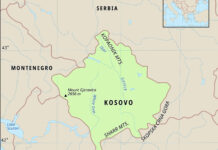This policy paper presents a comprehensive analysis of the Islamic State’s persistence and evolution in the digital arena following its territorial decline in Syria in 2019. Despite the significant reduction in controlled territory, the Islamic State has demonstrated a tenacious and innovative presence online, which has been critical in maintaining its operational activities across the globe, particularly in the Lake Chad Basin and the Sahel, as well as in its former Syrian and Iraqi strongholds. This adaptability was starkly evident in its January 2024 “Kill them wherever you find them” campaign, a surge in violence that underscored the group’s enduring capability to orchestrate high-profile attacks.
The report is structured into three key sections: an update on global operations, an in-depth exploration of the Islamic State’s online activities, and an analysis of potential areas of innovation within counter-terrorism practices. Utilizing the ExTrac open-source intelligence platform, the study employs both conflict and communications analytics to provide a detailed outline of the Islamic State’s capabilities and strategic communications post-territorial collapse.
The findings highlight a strategic shift characterized by a decline in kinetic operations and an increase in geographically diverse activities, especially across Africa. The data reveals an operational pivot towards a complex mix of traditional violence and modern disinformation tactics. This dynamic points to a crucial need for counter-terrorism strategies to evolve, incorporating both cutting-edge technology and refined human expertise to effectively anticipate and counter the Islamic State’s online and offline maneuvers.
Given the Islamic State’s adeptness at leveraging technological advancements for communication, recruitment, and logistics, the paper argues for a continual re-evaluation of counter-terrorism frameworks to address the multifaceted challenges posed by the group’s digital resilience. As the Islamic State continues to adapt, so too must the global security community’s approaches to combating its influence and reach.
You can read the policy paper at this link.








